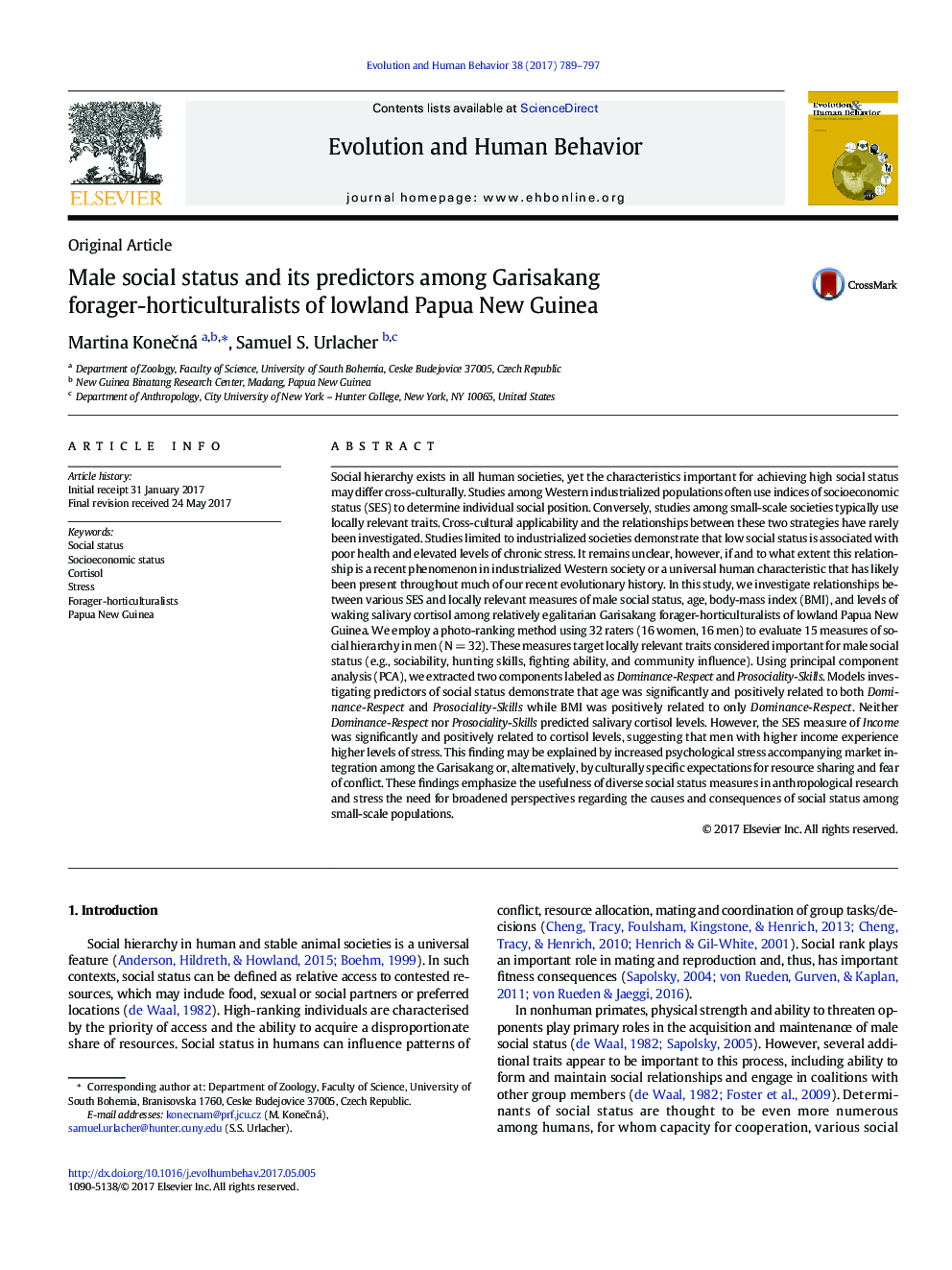| کد مقاله | کد نشریه | سال انتشار | مقاله انگلیسی | نسخه تمام متن |
|---|---|---|---|---|
| 5044762 | 1475510 | 2017 | 9 صفحه PDF | دانلود رایگان |
Social hierarchy exists in all human societies, yet the characteristics important for achieving high social status may differ cross-culturally. Studies among Western industrialized populations often use indices of socioeconomic status (SES) to determine individual social position. Conversely, studies among small-scale societies typically use locally relevant traits. Cross-cultural applicability and the relationships between these two strategies have rarely been investigated. Studies limited to industrialized societies demonstrate that low social status is associated with poor health and elevated levels of chronic stress. It remains unclear, however, if and to what extent this relationship is a recent phenomenon in industrialized Western society or a universal human characteristic that has likely been present throughout much of our recent evolutionary history. In this study, we investigate relationships between various SES and locally relevant measures of male social status, age, body-mass index (BMI), and levels of waking salivary cortisol among relatively egalitarian Garisakang forager-horticulturalists of lowland Papua New Guinea. We employ a photo-ranking method using 32 raters (16 women, 16 men) to evaluate 15 measures of social hierarchy in men (NÂ =Â 32). These measures target locally relevant traits considered important for male social status (e.g., sociability, hunting skills, fighting ability, and community influence). Using principal component analysis (PCA), we extracted two components labeled as Dominance-Respect and Prosociality-Skills. Models investigating predictors of social status demonstrate that age was significantly and positively related to both Dominance-Respect and Prosociality-Skills while BMI was positively related to only Dominance-Respect. Neither Dominance-Respect nor Prosociality-Skills predicted salivary cortisol levels. However, the SES measure of Income was significantly and positively related to cortisol levels, suggesting that men with higher income experience higher levels of stress. This finding may be explained by increased psychological stress accompanying market integration among the Garisakang or, alternatively, by culturally specific expectations for resource sharing and fear of conflict. These findings emphasize the usefulness of diverse social status measures in anthropological research and stress the need for broadened perspectives regarding the causes and consequences of social status among small-scale populations.
Journal: Evolution and Human Behavior - Volume 38, Issue 6, November 2017, Pages 789-797
